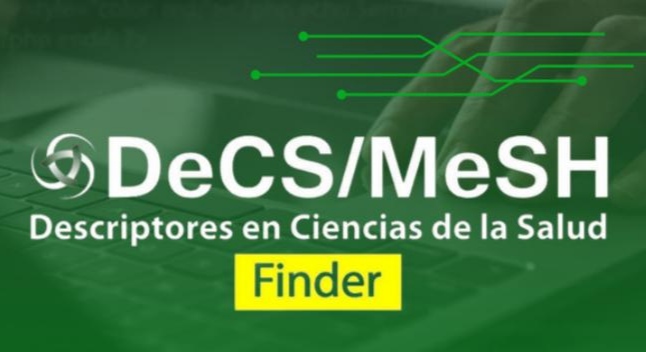Caracterización de la hemoglobina glucosilada A1c en embarazas sanas
Keywords:
hemoglobina glucosilada, embarazo, glucosilación no enzimática, HbA1cAbstract
Introducción: en embarazadas con diabetes mellitus pregestacional (tipo 1 o 2) y gestacional la determinación de la hemoglobina glucosilada tiene particular importancia pues se ha visto su valor correlacional con el desarrollo de complicaciones maternas y fetales.
Objetivo: caracterizar la hemoglobina glucosilada en los diferentes trimestres del embarazo.
Métodos: estudio observacional analítico transversal en el Hospital Ginecobstétrico «Manuel Fajardo» durante el segundo semestre del año 2016 a 100 embarazas sanas que asistieron al control prenatal; y un grupo control de 150 mujeres sanas no embarazadas mayores de 17 años en la población correspondiente al municipio Güines las que cumplieron con los criterios de inclusión y exclusión. Se realizó determinaciones de hemoglobina glucosilada y glicemia en ayunas.
Resultados: las embarazadas sanas el promedio de hemoglobina glucosilada fue menor que en las no gestante respectivamente 4.50 % (4.41- 4.49) contra 5.21 % (5.16-5.26), P<0,001. En el grupo de embarazada sanas la hemoglobina glucosilada aumentó con el trimestre del embarazo p<0,05, primer trimestre: 4.35 (4.20 4.47), segundo trimestre: 4.58 (4.45 4.70), tercer trimestre: 4.61 (4.14 5.08).
Conclusiones: durante el embarazo el porcentaje de Hb A1c aumenta con el trimestre del embarazo, por lo que es importante determinar su valor de referencia para un mejor control metabólico de las gestantes.
Downloads
References
2. Vargas E.A, Gómez JH, Conde JM. Medición de la hemoglobina glucosilada capilar como tamizaje en diabetes mellitus tipo 2. Med Int Méx [Internet]. 2014[citado10 Oct 2015]; 30: 538-45. Disponible en: http://www.medigraphic.com/pdfs/medintmex/mim-2014/mim145f.pdf
3. Cruz J, Hernández P, Grandía R, Lang J, Isla A, González K, et al. Consideraciones acerca de la diabetes mellitus durante el embarazo. Rev Cubana Endocrinol [Internet]. 2015 Abr [citado 3 Abr 2016]; 26(1): 47-65. Disponible en: http://scielo.sld.cu/scielo.php?script=sci_arttext&pid=S1561-29532015000100005&lng=es
4. Santiesteban S, Oliva Rodríguez J. Semiología obstétrica. En: Rigol Ricardo O. Obstetricia y Ginecología. La Habana: Ciencias Médicas; 2010. p. 5572.
5. Capítulo 5 Fisiología materna. En: Cunningham Gary F. Williams Obstetricia. 23 ed. México: Mc GrawHill Interamericana; 2011. p. 10735.
6. Shobha P, Mathen S, Abraham J. Glycosylated hemoglobin values in nondiabetic pregnant women in the third trimester and adverse fetal outcomes: an observational study. J Family Med Prim Care [Internet]. 2016Jul-Sep;5(3):646-51. Disponible en: https://www.ncbi.nlm.nih.gov/pmc/articles/PMC5290776/
7. Ye M, Liu Y, Cao X, Yao F, Liu B, Li Y, et al. The utility of HbA1c for screening gestational diabetes mellitus and its relationship with adverse pregnancy outcomes. Diabetes Res Clin Pract [Internet]. 2016Apr; 114:43-9 [citado 9 Oct 2016]. Disponible en: https://www.ncbi.nlm.nih.gov/pubmed/27103368
8. Adaptaciones maternas del embarazo. En: Cunninghan GF, Gant NF, Leveno KJ, Gilstrap LC, Hauth JC, Wenstrom KD. Williams Obstetricia. 21 ed. La Habana: Editorial Ciencias Médicas; 2007. p. 141-69.
9. Piermattei C. Hemoglobina HbA1c directa para la determinación cuantitativa de la hemoglobina A1c en sangre humana. Roma: CPM científica, 2012.
10. Mosca A, Paleari R, Dalfrà MG, Di Cianni G, Cuccuru I, Pellegrini G, et al. Reference intervals for hemoglobin A1c in pregnant women: data from na Italian multicenter study. Clin Chem [Internet]. 2006 Jun[citado 15 Feb 2017];52(6):1138-43. Disponible en: http://www.ncbi.nlm.nih.gov/pubmed/16601066
11. Connor CO, O'Shea PM, Owens LA, Carmody L, Avalos G, Nestor L. Trimester-specific reference intervals for haemoglobin A 1c (HbA 1c) in pregnancy. Clin Chem [Internet]. 2012[citado 15 Feb 2017];50 (5):9059. Disponible en: http://atlanticdipireland.com/wp-content/uploads/2016/01/trimester-specific-reference-intervals-for-glycated-haemoglobin-in-pregnancy.pdf
12. Hiramatsu Y, Shimizu I, Omori Y, Nakabayashi M. Determination of reference intervals of glycated albumin and hemoglobin A1c in healthy pregnant Japanese women and analysis of their time courses and influencing factors during pregnancy. Endocr J [Internet]. 2012 Dec [citado 15 Feb 2017];59(2):145-51. Disponible en: https://www.ncbi.nlm.nih.gov/pubmed/22166921
13. Lowe LP, Metzger BE, Dyer AR, Lowe J, McCance DR, Lappin TR, et al. Hyperglycemia and Adverse Pregnancy Outcome (HAPO) Study: associations of maternal A1C and glucose with pregnancy outcomes. Diabetes Care [Internet]. 2012[citado 15 Feb 2017]; 35(3):574-80. Disponible en: http://europepmc.org/abstract/med/22301123
14. Nathan DM, Kuenen J, Borg R, Zheng H, Schoenfeld D, Heine RJ. Translating the A1C assay into estimated average glucose values. Diabetes Care [Internet]. 2008 Aug[citado 30 Oct 2017];31 (8):1473-78. Disponible en: http://care.diabetesjournals.org/content/31/8/1473.short
15. Sharma B, Mahajan P, Prasad S, Pandey R, Singh J, Sodhi KS. Glycated haemoglobin levels in no diabetics: the effect to ageing. medical science [Internet]. 2013 Jul-Dec[citado 13 Oct 2017];2 (2): 116-24. Disponible en: https://www.ejmanager.com/mnstemps/69/69-1383930664.pdf?t=1556653636
16. Goyal G, PanagK, Sheenam S, Singh J. High glycated hemoglobin levels in corelation with ageing in non-diabetics. Int J Med Res Prof [Internet]. 2015[citado 30 Oct 2016];1(3): 35-39. Disponible en: http://admin.ijmrp.com/Upload/IJMRP%201(3)%2035-39.pdf
17. Amador Rodríguez L, Sosa Pérez JC, BuchacaFexas EF, Fernández Valdés F, Bermudéz Rojas SA, Mora I. Niveles de hemoglobina glucosilada y su correlación con las glucemias de ayuno y postprandial en un grupo de pacientes diabéticos. Acta Médica [Internet]. 2015[citado 23 Oct 2015];16(1). Disponible en: http://bvs.sld.cu/revistas/act/vol16_1_15/act04115.htm
18. Orellana R. La hemoglobina glucosiladas. Rev Inv Sci [Internet]. 2014[citado 21 Mar 2018]; 3(1):3-9. Disponible en: http://www.revistasbolivianas.org.bo/scielo.php?pid=S2313-02292014000100001&script=sci_arttext
Published
How to Cite
Issue
Section
License
Medimay protects copyright from the very first moment the submission is made, but upon publication it assumes a Creative Commons 4.0 (cc-by-nc) license, which allows the use of the work to share (copy and redistribute the material in any medium or format) and adapt (remix, transform and build from the material) as long as exclusive mention is made of the publication in the journal as a primary source, prohibiting its commercialization. The author always retains his/her right.














 This site is licensed under a
This site is licensed under a